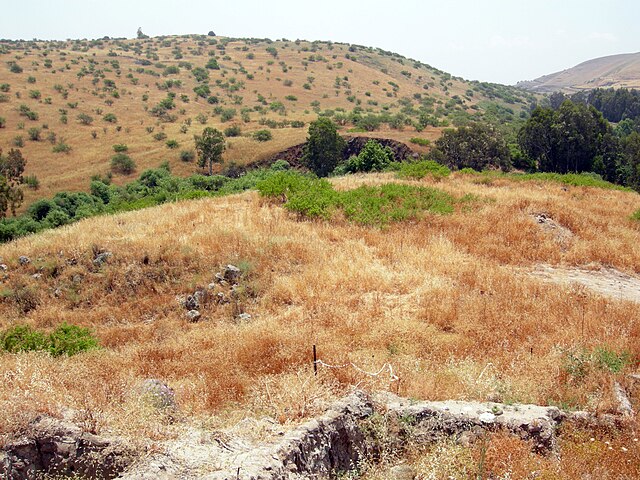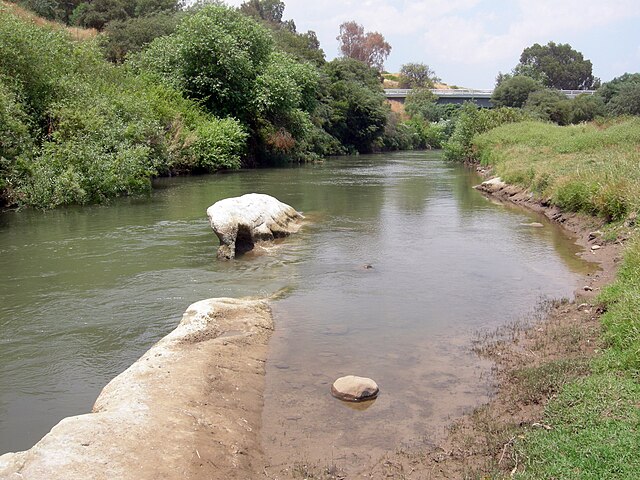Battle of Jisr Benat Yakub
The Battle of Jisr Benat Yakub was fought on 27 September 1918 at the beginning of the pursuit by the Desert Mounted Corps of the retreating remnants of the Yildirim Army Group towards Damascus during the Sinai and Palestine Campaign of World War I. After the Battle of Samakh and the Capture of Tiberias, which completed the Egyptian Expeditionary Force's decisive victory in the Battle of Sharon section of the Battle of Megiddo, the Australian Mounted Division attacked and captured a series of rearguard positions. The positions were held by German and Ottoman soldiers of the Tiberias Group at Daughters of Jacob Bridge, an important bridge across the Jordan River, and at fords at El Min and north towards Lake Huleh.
"Jisr Benat Yakub: bridge repaired by Australian Unit" by George Lambert, shows the repaired bridge and buildings at the western end of the bridge in 1919
The view from the west bank of the Jordan River towards the site of the Ottoman rearguard; the sites of the Battle of Jacob's Ford
Bnot Ya'akov Bridge over the Jordan River near Jacob's Ford in 2009
Jisr Benat Yakub repaired
The Capture of Damascus occurred on 1 October 1918 after the capture of Haifa and the victory at the Battle of Samakh which opened the way for the pursuit north from the Sea of Galilee and the Third Transjordan attack which opened the way to Deraa and the inland pursuit, after the decisive Egyptian Expeditionary Force (EEF) victory at the Battle of Megiddo during the Sinai and Palestine Campaign of World War I. Damascus was captured when Desert Mounted Corps and Prince Feisal's Sherifial Hejaz Army encircled the city, after a cavalry pursuit northwards along the two main roads to Damascus. During the pursuit to Damascus, many rearguards established by remnants of the Ottoman Fourth, Seventh and Eighth Armies were attacked and captured by Prince Feisal's Sherifial Army, Desert Mounted Corps' Australian Mounted Division the 4th and the 5th Cavalry Divisions. The important tactical success of capturing Damascus resulted in political manoeuvring by representatives from France, Britain and Prince Feisal's force.

A busy city square in Damascus 1918
Road from Jisr el Majamie to Irbid at the Wadi Ghafur on 29 September when 30 lorries which supplied the 4th Cavalry Division passed by; the bridge breaking under the pressure so the lorries crossed the stream bed on the right
George Lambert's painting of the repaired bridge at Jisr Benat Yakub showing the buildings at the western end in 1919
After the surrender of Quneitra to Major General H. W. Hodgson, commander of the Australian Mounted Division (centre), on 28 September 1918. (Brigadier General Grant on right)







